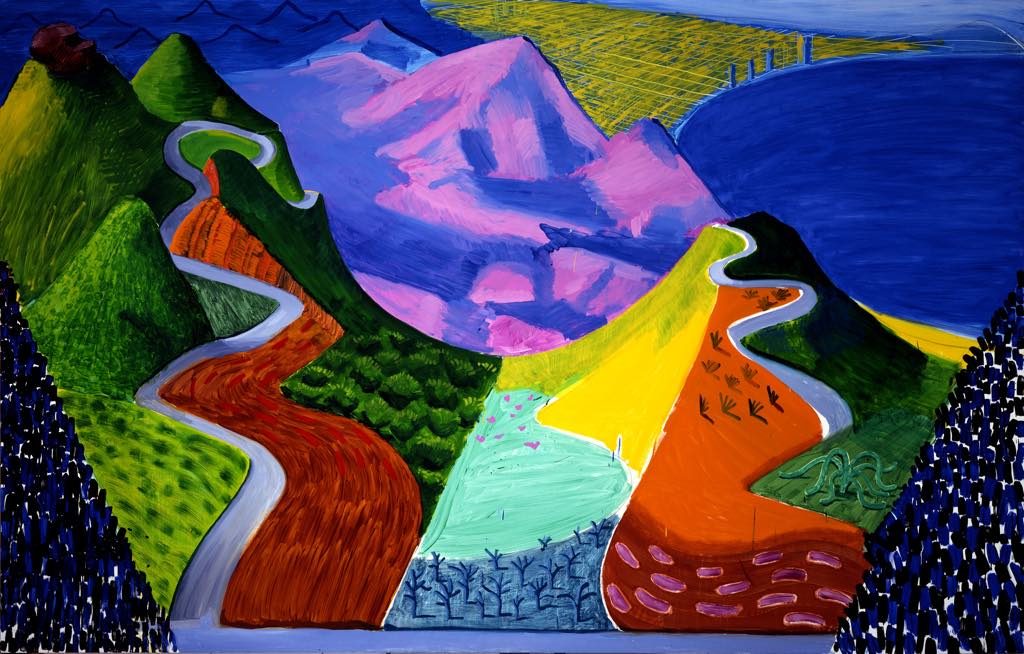
British artist David Hockney turned 80 this month but is still as productive and eclectic as ever, as evidenced by a retrospective at the Centre Pompidou in Paris through October 23.
Following up on the hugely successful Hockney show this winter at London’s Tate Modern, the Paris exhibition is even richer, adding the artist’s most recent work, hot off the easel.
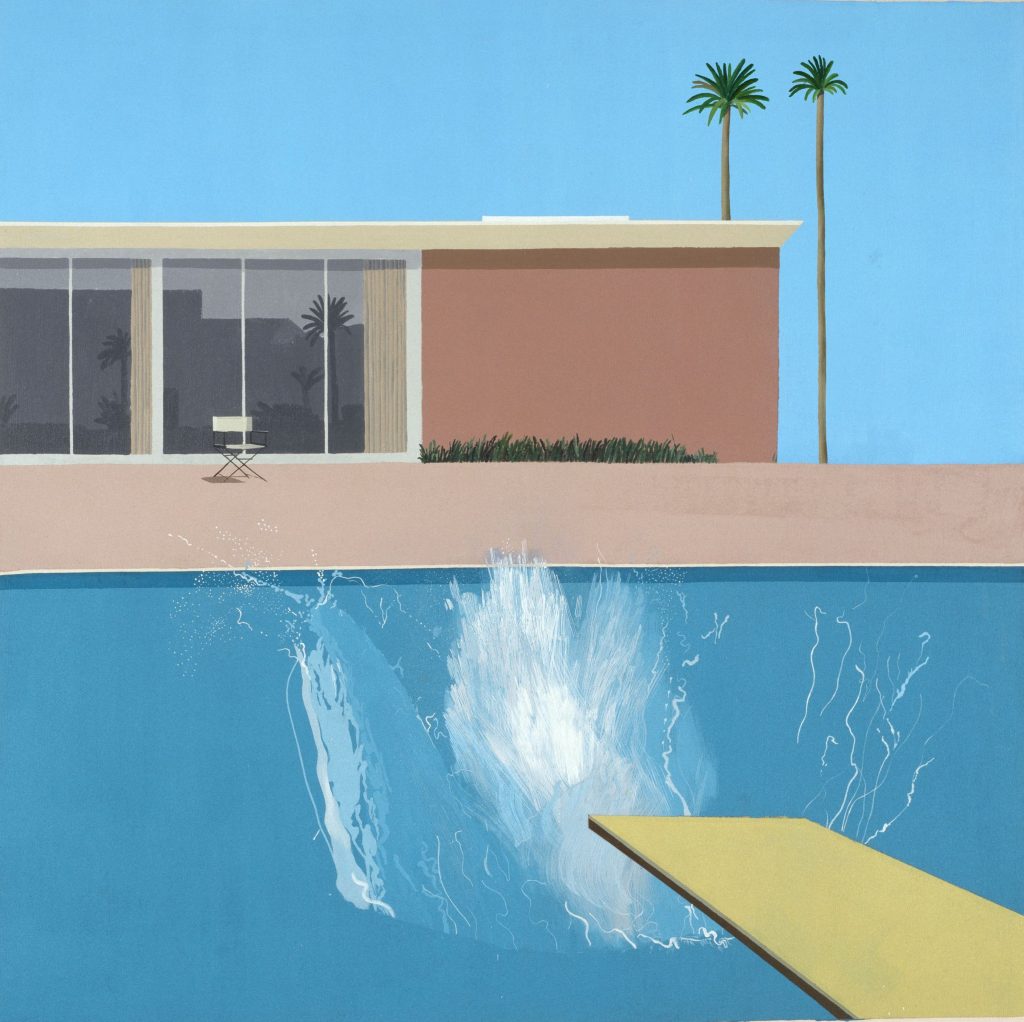
Hockney is probably best known for his California poolside paintings, but this vast show reveals how prolific and versatile he has always been, working in many different mediums and styles. What is most striking is the joyfulness and exuberance of his work.
When he left England for the West Coast of the United States in the 1970s, Hockney was not afraid to flout the prevalent American fashion for minimalism and Abstract Expressionism. At the risk of being written off as old-fashioned and reactionary, he produced figurative paintings in vibrant colors, depicting everything from bouquets of flowers to landscapes and people. Although he dabbled for a time in abstraction, he did it with a slightly mocking grin, as can be seen in the “Love Paintings” from the 1960s shown here, and quickly went back to figurative painting.
His influences included Picasso, Francis Bacon and Jean Dubuffet – and the 18th-century satirical prints of William Hogarth, which inspired his own witty series of prints of “A Rake’s Progress” (1961-62). On view here, it documents the artist’s liberation and transformation in New York City as he started to make money and revel in the city’s gay scene.
This is only one example of a strong vein of humor running through Hockney’s work, together with a powerful theatricality (he is also well known for his stage sets, including those for Stravinsky’s A Rake’s Progress in 1975), visible in his 1963 painting “The Hypnotist,” for example.
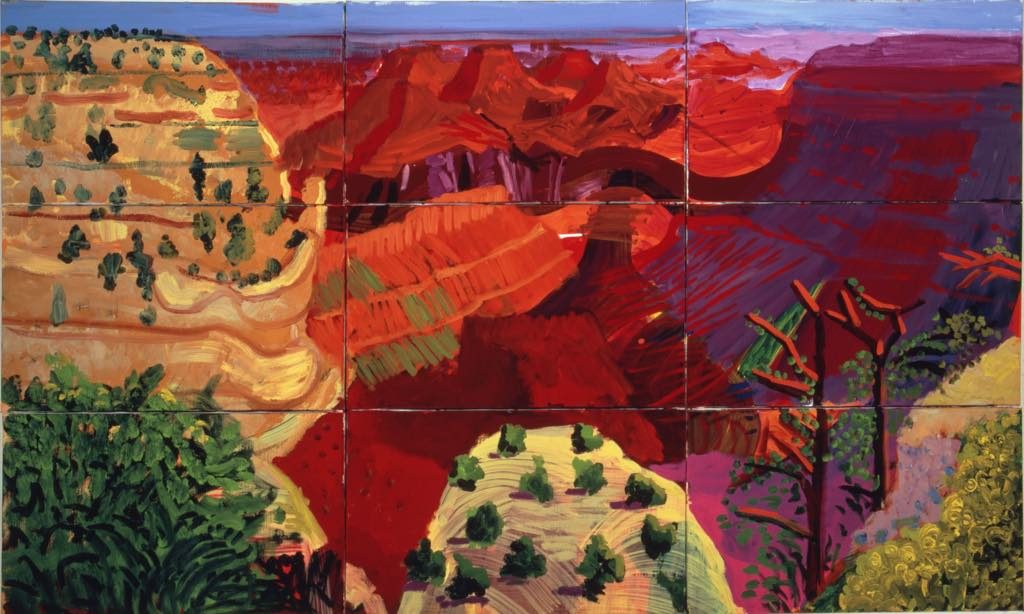
Born in 1937 in the Northern English town of Bradford, Yorkshire, Hockney entered the Royal College of Art in London in 1959 and within a few years established a reputation as one of the most creative, technically skilled and technologically innovative painters of his generation.
A ceaseless experimenter in styles and media, he explored the art-making capabilities of such innovations such as the Polaroid camera in 1964, the color laser photocopier in 1987, the fax machine in 1989, the computer in 1990, the graphic tablet in 2008, the iPhone in 2009, the iPad in 2010 and HD-resolution cameras in 2011.
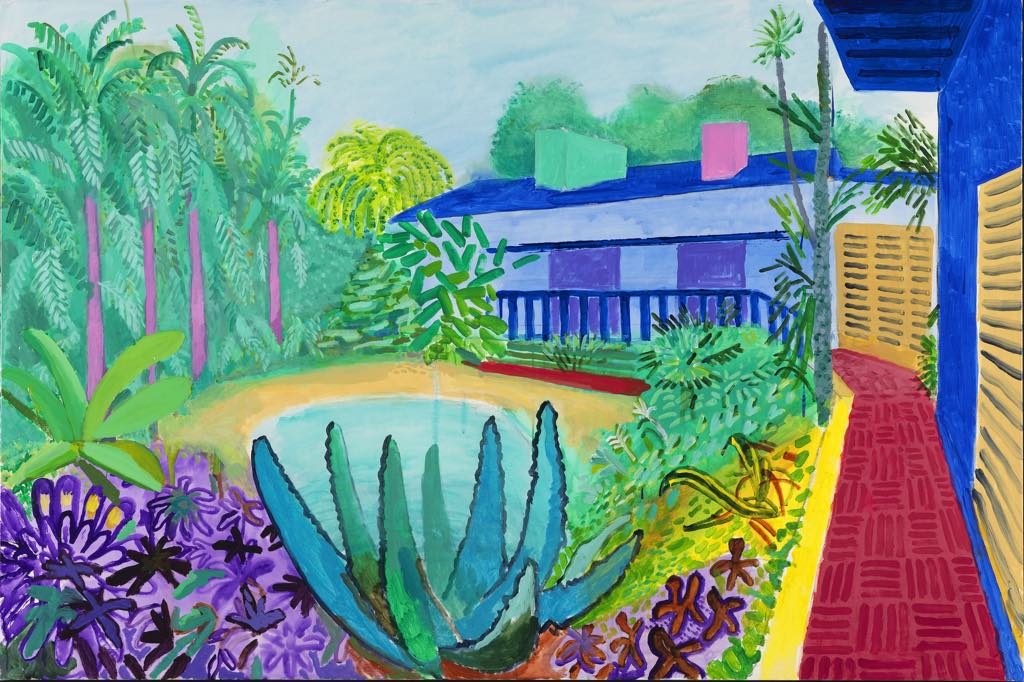
Like Matisse, Hockney sees a work of art as “a celebration of pleasure.” A serious student of art history, he seems to excel at everything he tries his hand at, creating one “celebration of pleasure” after another, none more so than the intensely colored recent paintings, with their contrasting, saturated hues worthy of the Fauves.
What is amazing about Hockney is that while always trying his hand at something new – never stagnating or repeating himself as many long-lived artists tend to do — his work is always original yet recognizably Hockney. There is no such thing as hackneyed Hockney.
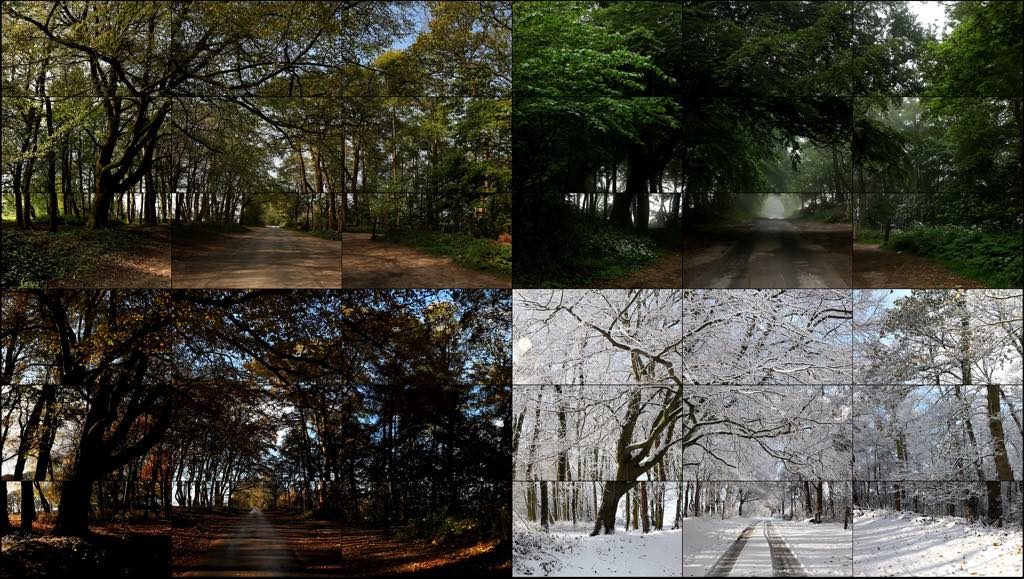
The last work in the exhibition shows the trees and hawthorns of his native Woldgate. Using nine wide-angle HD-resolution cameras, Hockney and his team documented the changing seasons with meticulous precision, capturing and collaging each shift of light. This is the next-best thing to walking through the woods yourself.
The Tate Modern’s Hockney show set a record as the most popular ticketed solo exhibition by a living artist, and the Pompidou edition is sure to beat all records. This is how the new Tate director, Maria Balshaw, described the Hockney show at London’s Tate Modern: “The building felt full of joy all the way through.” If you are in Paris, make sure you get to Pompidou for your hit of joy.
Click here to listen to Susan Stamberg’s NPR interview with David Hockney as he was preparing for the Tate exhibition.
Favorite
Was fortunate to have been in the Kasmin Gallery in London, visiting from Chicago in 1970, when Hockney walked-in with a painting and said, “What do you think?” Kasmin was his dealer. “Sit down and have a drink,” he said. So we all had a drink. I had already decided to buy the “Grims Fairy Tale” series of etchings, which I had discovered in a tiny book published by MoMA, £1,000 for seven large etchings…five signed. Kasmin and Hockney were both gracious, and we had a sip together. Later moved to Paris, attended his splendid 1972 show and said hello.
Was sitting in Brasserie Lipp sometime in the early 70s and noticed a couple sitting to my right on the red banquette. They looked familiar and interesting.
Sometime later, I discovered that I had seen them before. They were artists of some note; I had seen them in their portrait painted by Hockney. It was in the 70s Paris show and often appears in collections of his works.
Great stare value at Lipp in those days.
Magnifique expo !